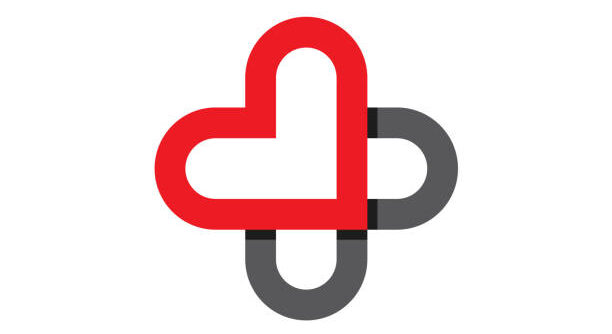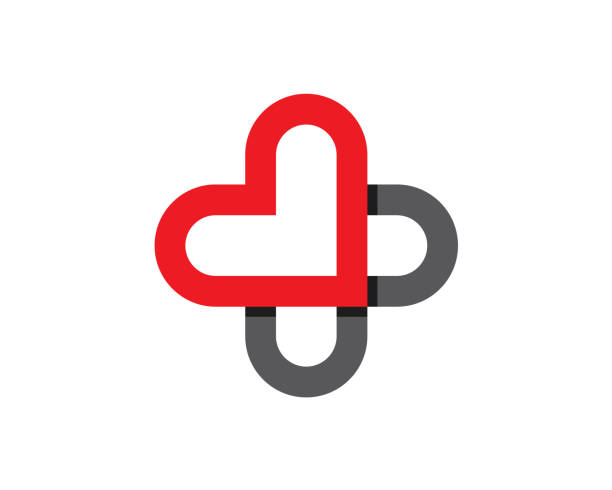Warts are small local painless growths in the skin. These are caused by a virus known as human papillomavirus (HPV). These warts can be disfiguring and embarrassing but are generally harmless. Sometimes, these warts may itch or hurt, particularly in the feet. Some warts are spread through the sexes and are known as genital warts. Warts can disappear on their own with time but it may take a very long time or say years. Check out warts symptoms and treatments in the following content.
Types of Warts and Symptoms
Common warts: These warts usually appear on the hands but can be on any part of the body. They do not cause any pain until they are repeatedly rubbed.
Flat warts: These warts generally appear on the face and forehead. Such ones are common in children but are rarely found in adults.
Plantar warts
These warts can also appear on the sole of feet and can be very painful. Sometimes, it becomes very difficult to walk or run due to a plantar wart.
Plantar Wart Symptoms: You might feel a hard, grainy growth on the bottom of your foot, and it can cause discomfort or pain when you walk, almost like having a small stone in your shoe. Often, you will see tiny black dots, which are clotted blood vessels, appearing on the surface of these warts.
Genital warts
These warts are usually found on the genitals, between the thighs. However, these warts can also appear inside the vagina and anal canal. They are contagious and spread to other parts. Also, genital warts may be transmitted to another person but this is uncommon.
Genital Warts Symptoms: You may notice small, flesh-colored bumps or cauliflower-like growths appearing in the genital area, and these can sometimes cause itching or mild discomfort, though often they present no symptoms at all. It’s important to see a doctor if you observe any new growths, as they can properly diagnose the condition and discuss your options.
Periungual and subungual Warts
These warts usually develop under and around the fingernails and toenails.
Periungual Warts: These warts form around the fingernails or toenails. “Peri-” means around, and “-ungual” refers to the nail. They often look like rough, thickened skin around the nail plate and can sometimes affect nail growth or cause the nail to detach. ( Source- Wikipedia)
Subungual Warts: These warts grow underneath the fingernail or toenail. “Sub-” means under. They can be more difficult to treat due to their location and can also be painful. These warts may cause nail deformities or loss. ( source- Webmd)
Anal Wart Symptoms
You might find small bumps or growths around or inside the anus, and these can sometimes lead to itching, bleeding, or a feeling of a lump in the area. Because other conditions can cause similar symptoms, you should consult a healthcare provider for an accurate diagnosis if you notice these changes.
Prevention of Warts Symptoms
You can reduce the risk of further spreading or catching common warts by taking the following precautions:
- Do not touch warts. Avoid any direct contact to reduce the risk of spreading any further.
- Do not scratch or pick at warts, as the habit may further spread the virus.
- Avoid using other people’s stuff. Do not share personal items such as nail clippers, towels, pumice stones, and washcloths.
- Moreover, do not share your shoes, slippers, or socks with other people.
- Do not bite your fingernails because warts commonly target broken and damaged skin. When you nibble the skin around your fingernails, it invites viruses and bacteria.
- Use grooming products with care. Do not use combs and brushes on the areas having warts. Avoid clipping hair or shaving around warts. A better alternative is to use an electric razor.
- Maintain proper hygiene. Use separate clippers for healthy and infected nails. Thoroughly wash your hands after touching or treating a wart.
- Keep your hands dry as much as possible.
- Wear waterproof footwear in locker rooms or public showers.
Awareness is the key to the cure. Therefore, keep reading about wart symptoms and treatments further.
Complications With Warts
Although most warts go away over time without any significant problems. Sometimes, stubborn warts can cause the following possible issues:
- Cancer – It is more commonly linked with HPV and genital warts. These warts can cause several different cancers, such as anal, throat, and cervical cancer. You can avoid the risk of genital warts by using condoms and getting the HPV vaccine.
- Disfigurement – Generally seen in people with a weak immune system. They develop unappealing clusters of warts throughout different body parts.
- Infection – Very common in people who do not maintain proper hygiene.
- Pain – Often observed in plantar warts that grow inward into the foot.
Treatments for Warts
There are various treatments available for warts but warts may respond erratically to various treatments. If you consult doctors they have various approaches to get rid of these warts.
Cryotherapy
One of the most popular options is cryotherapy. In this method, the doctor will freeze the wart for 1-3 weeks depending upon the intensity of the wart by using liquid nitrogen. Additionally, this method is quite effective and will normally remove warts.
Laser Treatment
Laser treatment is another option. In this treatment, the light beam destroys the tiny blood vessels inside the wart which may also get destroyed. This procedure may also fight off the virus inside. Moreover, this procedure is ideal for hard-to-reach places where warts are located. This laser treatment is called pulsed-dye laser.
The flip side of this treatment is that it may leave scars on the skin and some remnants might still exist in the skin which may spread bacteria, fungi, or viruses.
However, there are other kinds of laser treatments too such as carbon dioxide laser and garnet laser. Here are some more options-
Salicylic Acid (Higher Strengths): While over-the-counter (OTC) salicylic acid is available, your doctor can prescribe stronger concentrations. This works by gradually peeling away layers of the wart and can also stimulate your immune system. It often requires consistent daily application for several weeks.
Cantharidin: Your healthcare provider applies a liquid mixture containing cantharidin to the wart. This causes a blister to form underneath the wart, cutting off its blood supply. You’ll typically return to your provider’s office in about a week to have the dead wart removed.
Immunotherapy: These treatments aim to stimulate your body’s immune system to fight the HPV virus causing the wart.
Electrosurgery (Cautery): This involves burning away the wart tissue using a heated needle. Scarring is a possibility.
Other Methods for Wart Treatment
FDA-approved wart removers are also available in the market. You can also apply herbal-based liquid medication to the affected area which is quite safe.
Several types of over-the-counter drugs like creams, and gels are also available in the market that claims to dissolve and kill warts. Some of the drugs contain salicylic acid and some cream contains hydrogen peroxide.
Many people try to get rid of warts with home remedies by applying lemon or lime juice to warts several times a day.
Apple cider vinegar: Some people believe that acid in these products will dissolve the hard surface of warts and kill the virus.
Garlic: Garlic extract has some antiviral properties. Crushed garlic applied to the wart and covered with a bandage is a traditional remedy, but research is limited.
Tea Tree Oil: Historically used as an antiseptic, some anecdotal reports suggest tea tree oil may help with warts, but more research is needed.
Aloe Vera: Known for its skin benefits, aloe vera is sometimes used for warts due to its antioxidant and anti-infective properties, though evidence is anecdotal.
Banana Peel: Some believe compounds in banana peels, like enzymes and mild acids, can be helpful when applied to warts.
In fact, we need specific treatments that remove the root cause of warts. Here we will discuss herbal products to get rid of warts.
Cure Warts with “Natural Warts Product”
H-Warts: A Natural Warts Product is an herbal wart treatment. This is a natural formula designed specifically for warts by using established ingredients. H warts contain the highest quality of pure essential oils, extracted from plants. The formula is completely natural – free from all herbicides, pesticides, and chemicals. H-Warts are specially formulated for common warts, verruca, flat warts, facial warts, and planters warts.
Made up of the highest quality essential oil and homeopathic ingredients, H-Warts Formula is gentle on the skin and safe for adults and children over 4 yrs. It contains no harmful additives, is FDA listed, and is manufactured to the highest standards in a GMP facility in the USA.
The result will vary from person to person. You may expect positive results within 2-6 weeks of use by applying three times a day. Take the precaution that you do not touch or scratch the wart. Stubborn warts may take a little longer.
When you apply H-Warts Formula on your face and body over time, warts change color, diminish in size, and gradually flake away. However, the time may vary from person to person. Ideally, most common warts go away within one to two weeks.
To apply this product place a few drops on a Q-tip or use your fingers. Simply dab each wart and there is no need to saturate them. This product also comes with a 90 day money-back guarantee.
Drawback:
1. You should not use this product for children aged below 4 years.
2. This should not be used by those who are pregnant or nursing.
Frequently Asked Questions (FAQs) on Warts
Is a wart contagious?
Yes, warts are contagious because they are caused by the human papillomavirus (HPV), and you can spread the virus to other parts of your own body or to other people through direct skin-to-skin contact or by touching contaminated surfaces like towels or razors.
What are common HPV wart symptoms in women?
In women, HPV can cause genital warts, which may appear as small, flat or raised, flesh-colored bumps, or tiny cauliflower-like growths on the vulva, in or around the vagina, on the cervix, or around the anus, and sometimes these warts cause itching or discomfort, but often they have no symptoms.
Are seborrheic keratosis and warts the same or different?
Seborrheic keratosis and warts are different skin conditions; warts are caused by a viral infection (HPV) and are contagious, while seborrheic keratoses are non-cancerous skin growths that often look waxy or “stuck-on,” are not caused by a virus, and are not contagious.
What are senility warts?
“Senility warts” is a common, though somewhat outdated, term for seborrheic keratoses, which are harmless, often pigmented, growths that tend to appear as people age; they are not true warts caused by HPV and are not related to senility.
Can stress cause warts?
While stress doesn’t directly cause warts (as warts are caused by HPV), stress can weaken your immune system. A weakened immune system might make you more susceptible to contracting the virus or could lead to existing warts becoming more problematic or harder to treat.
How do I know if it’s a wart or a corn?
Warts often have tiny black dots (clotted blood vessels) and can be painful when pinched. While corns are typically hard, thickened areas of skin caused by pressure or friction, often painful when pressed directly, and they don’t have black dots. Warts also tend to disrupt the natural skin lines, whereas skin lines usually continue over a corn.
Do warts go away on their own?
Many warts, especially in children, may go away on their own without treatment over several months or even a couple of years as the body’s immune system fights off the virus. However, some warts can be persistent, spread, or cause discomfort, leading people to seek treatment.
Can you get warts from a public shower?
Yes, it’s possible to pick up the HPV virus that causes warts from warm, moist environments like public shower floors or locker rooms, especially if you have any small cuts or breaks in your skin on your feet. So, wearing shower shoes can help reduce this risk.
References-
https://www.webmd.com
Related Post-
Can Face Yoga Help You Get a Better Smile?






